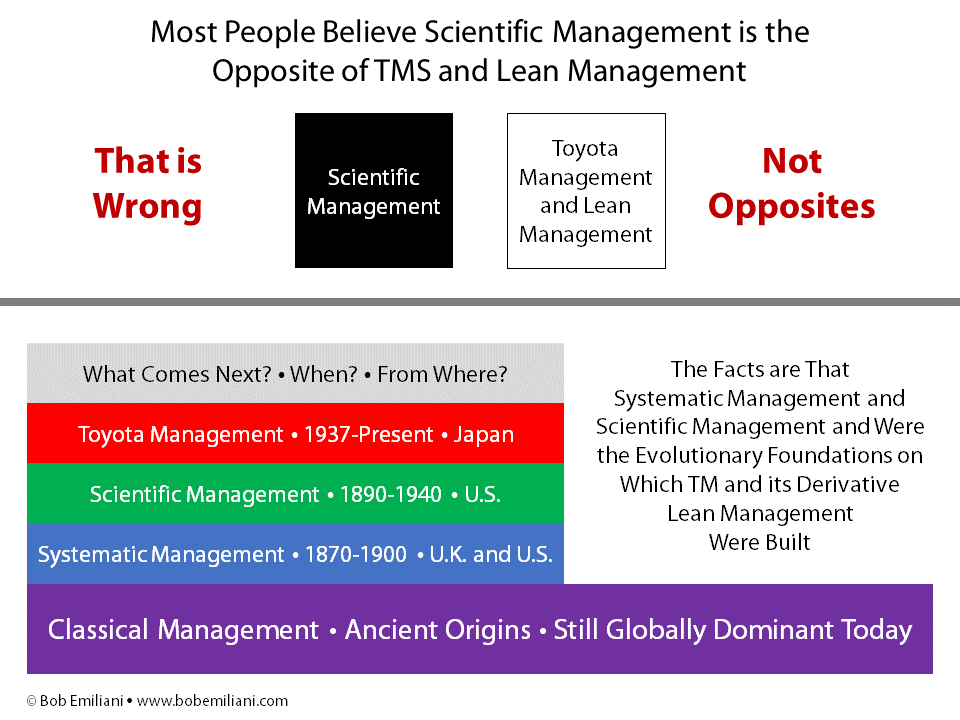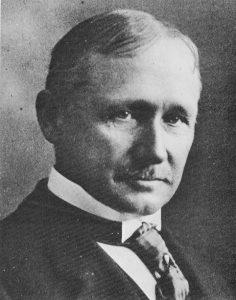Business leaders’ declining interest in Lean in recent years is a problem for the Lean movement and those who promote Lean management. How might this important problem be solved? Is there a quick and easy way to do it? A solution one can jump to? Business leaders are skilled creating canards and diverting their biggest problems onto others. Why not try that, but with a few important alterations? First, find a dead person… someone from the long-ago past who people today won’t bother to learn the facts about… someone has previously been vilified and which others uncritically concur… someone who had no direct hand in creating 1980s Lean… someone who has nothing to do with today’s problem of declining interest in Lean. Next, suspend what Lean teaches about respect for people, blaming others, problem-solving, facts, scientific thinking, continuous improvement, and related inconveniences. Then, blame the dead person again and again until the flock of deferential Lean practitioners believe it. To any tête de bite who dares to present the facts, label them as trolls, gangs, unpleasant persons, negative in tone, bullies, nitpickers, etc., and fabricate the notion that they are solely out to protect Taylor’s legacy, not the facts. Lean followers will never recognize that ad hominem attacks on dead and living persons are inconsistent with “respect for people.” Defend using strawman arguments and offer nothing more than contradiction, obfuscation, evasion, and misdirection because there will not be any credible counterarguments, and claim, when convenient, superior comprehension of “respect for people.” Introduce a clever pejorative term, “Super Somethingism,” and use it again and again so that people will be duped into believing how badly the dead person messed things up for Lean. Sacré bleu, one more thing: Never acknowledge the substantive reasons for Lean’s demise: Ignore the 30-to-40-year cycle of management tends. Ignore how Lean arrived at the start of the Second Gilded Age and was used by executives merely as an instrument to increase corporate wealth. Ignore that the CEO marketplace for Lean has spoken and has largely moved on to other things. Ignore that most business leaders misunderstood and misused Lean, and disregarded Lean principles. And le plus important, never acknowledge the real reason, the institution of leadership — the actual cause of separating those who think from those who do the work (which predates the dead person by centuries). Doing so would bite the hand that feeds us. No, no, no. Make sure a dead person, that enfoiré, is blamed for all the problems that have stalled our noble and magnificent corporate social movement. This is the only sensible solution.
Dr. Michael Ballé recently took on this discomforting real-world problem and picked Frederick Winslow Taylor, who died in 1915, as the one person responsible for Lean’s demise. Taylor, and his legacy (“Taylorism”), is evidently why executives cannot understand Lean management (nor academics), why leaders treat employees poorly, why they separate thinking from doing, and why leaders believe consultants should solve all their problems rather than train and develop employees to solve the company’s problems. It is Taylor, he wants us to believe. Ce connard Taylor! Il est temps de se lever et d’être compté. Dirigez, suivez ou écartez-vous!
Yes, Taylor — the man who worked his way up from the shop floor to senior leadership; the inventor of high speed steel; winner of United States National tennis doubles championship in 1881; the creator of Scientific Management and father of industrial engineering upon which the Toyota Production System was built; whose work was recognized word-wide in the early decades of the 1900s; the man who introduced focused worker training and development (“The development of each man to his greatest efficiency and prosperity,” TPSM, p. 140) that later became the foundation for TWI; whose goals were to make work “smooth and easy for the workman” (so that they would not resort to “soldiering”) and create prosperity for all; the forerunner to the human relation research of Mayo and Maslow; the man who invented management consulting; and the person without whom Dr. Ballé would be in a less lucrative line of business — is the bad guy. Le bâtard caused a century’s worth of exploitative management damage to business and organizations worldwide. Scorn him. Oversimplify and mischaracterize him. And make sure people know there is nothing to learn from him. Super Taylorism — c’est naze!

Some twenty years ago, Michael Ballé looked more favorably upon Frederick Taylor. It was during the halcyon days of his doctoral research in sociology, in the late 1990s, at Sorbonne Université in Paris, France. Dr. Ballé’s doctoral dissertation, “Les modèles mentaux: étude du raisonnement en situation,” (“Mental models: study of reasoning in a situation,” published as a book in 2004) compared and contrasted the three highest acclaimed innovators in the field of production: Frederick Winslow Taylor, Henry Ford, and Taiichi Ohno.
The analysis of each innovator considers one single primary source of information for Taylor (The Principles of Scientific Management, 1911), Ford (Today and Tomorrow, 1926), and Ohno (L’Esprit Toyota, 1990), and relies heavily on secondary and tertiary sociological studies of each man’s mindset (mental model), intentions (reasoning), and work in the context of their specific situation. The use of additional primary sources, vast as they are for Ford and especially for Taylor (e.g., the early 1900s published works by Henry Gantt, Frank and Lillian Gilbreth, Morris Cooke, C. Bertrand Thompson, Henry Farquhar, Harlow Person, James Dodge, Henry Kendall, Horace Hathaway, and Charles Going, to name a few) would have clarified and strengthened his analysis. (Note: Ballé’s recent work continues to omit these primary sources, which means he is no Taylor scholar). While generally laudatory in terms of technical accomplishments and industrial and societal impact, Ballé shows how each man was, in his own way, passionate and highly driven, with Ford and Ohno being generally irascible and Taylor, whose paramount sin was a few injudicious word choices when judged by today’s standards, but which were in common use during his time.
Ballé’s doctoral dissertation is a relatively neutral analysis of the three men, placed on equal footing, in recognition that their individual objectives and methods varied. Yet, somehow in the intervening years, Lean seems to have transformed Dr. Ballé to a much less favorable view of Taylor and a far more favorable view of Ohno. Despite Ohno having finished what Taylor started, and who could easily be construed as another villain in this story of exploitative management, Taylor’s redemption is apparently unwarranted no matter the facts about what Fred said, what Fred intended, or what Fred accomplished. Old Fred is to be discarded from the lore of Lean and its storied lineage like worthless merde, unworthy of association with the elite promoters of progressive management who are facing their own impending collapse.
Of course, mon amie Dr. Ballé is allowed to change or harden his position against Frederick Taylor, but the facts cannot be changed. Fred is the founder of modern progressive management whose work connects directly to Toyota’s management system and its derivative Lean management. Scientific thinking applied to management was Fred’s innovation. Lean is in big trouble if the strategy to rehabilitate it is to blame Frederick Winslow Taylor. Don’t believe the hype.

Instead, get serious about this problem, confront the facts, and make real progress by understanding the actual causes of executive disinterest in Lean management and then take action.
— fin —


